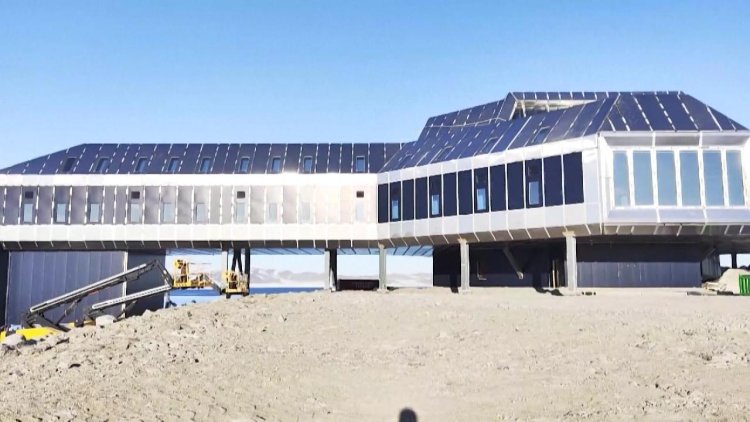China's Antarctic Base Implements Expanded Renewable Energy System
In March, China's Qinling Station in Antarctica launched an innovative hybrid power system that integrates wind, solar, hydrogen, and diesel energy, marking the completion of the nation’s first large-scale clean energy initiative on the continent....

This new system is engineered to generate 60 percent of the station's power from renewable sources, with expectations to reduce annual fossil fuel consumption by over 100 tonnes, highlighting China's commitment to greener research in polar regions.
The station features 100-kilowatt wind turbines, 130-kilowatt solar panels, a 30-kilowatt hydrogen setup, and a low-temperature battery with a capacity of 300 kilowatt-hours, as detailed by a member of China's 41st Antarctic expedition team.
"This system signals a shift from fossil fuels to sustainable energy in Antarctic exploration," remarked Sun Hongbin, a prominent polar energy scientist and president of Taiyuan University of Technology in Shanxi Province, northern China.
The project was developed through laboratory simulations, real-world testing, and on-site trials, taking shape within the university's polar environment clean energy lab.
Researchers within the lab recreated the harsh conditions of Antarctica, including temperatures as low as minus 50 degrees Celsius and winds reaching 60 meters per second. A simulation research cabin replicated the living quarters at the station, while outdoor chambers generated artificial snowstorms.
"Extreme cold and gales are the biggest hurdles. Lab simulations improve equipment reliability and safety," stated Dou Yinke, the dean of the university's school of electrical and power engineering.
In periods lacking wind and sunlight, the system is capable of supporting the station's maximum load of 150 kilowatts for two-and-a-half hours. Additionally, its hydrogen units can supply 30 kilowatts of uninterrupted power for 14 days during the polar nights.
Sun highlighted the dual advantages of the new system: reduced costs and safeguarding Antarctica’s delicate ecosystem.
Kim Yea-dong, former president of the Scientific Committee on Antarctic Research, noted that despite the considerable technical challenges in setting up clean energy systems in Antarctica, Qinling Station's attainment of a 60-percent renewable energy utilization rate is a commendable achievement.
Qinling Station, which is China’s fifth Antarctic base, commenced operations in February 2024. Plans are underway to extend this model to China's other polar stations and adapt it for use in various harsh environments globally.
Frederick R Cook for TROIB News
Discover more Science and Technology news updates in TROIB Sci-Tech












